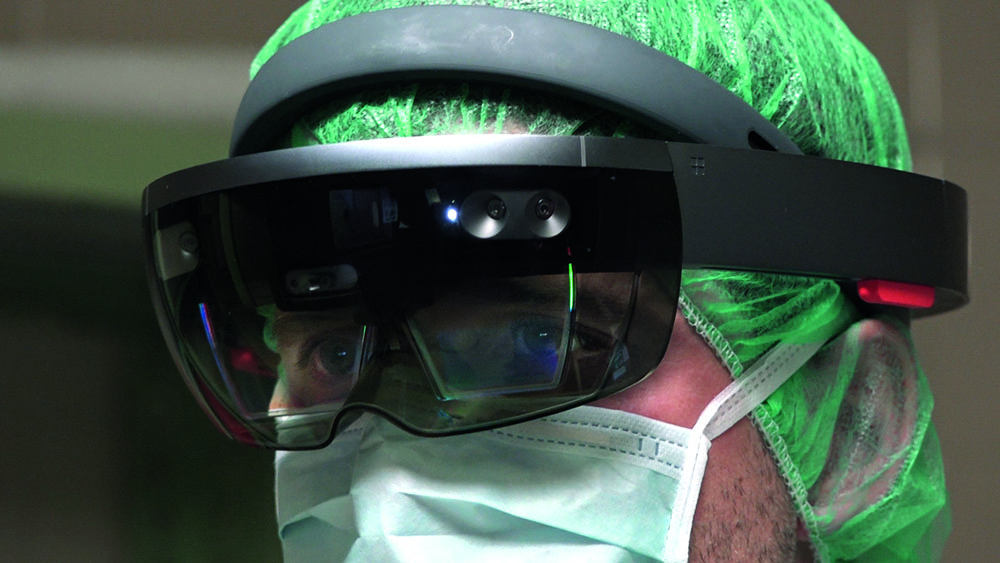
Being able to place minimally invasive spinal instrumentation accurately reduces surgical time and complication risk. Augmedics’ xvision Spine system (XVS) is the first AR navigation system to be used in spinal surgery. Johns Hopkins University surgeons recently used XVS to place six screws in a patient’s spine to fuse three vertebrae to relieve the patient’s back pain. XVS allows surgeons to visualize their patients’ 3D spinal anatomy through skin and tissue during surgery to accurately navigate instruments and implants while looking directly at the patient, rather than a remote screen. The navigation data is projected onto the surgeon’s retina using a headset. Augmedics has received the U.S. Food and Drug Administration (FDA) 510(k) clearance for its AR headset for surgical procedures.
Establishing intravenous (IV) access (finding a vein) can be challenging. On average, it takes two to three attempts to establish a patent peripheral IV site (source: National Institutes of Health). The AccuVein Vein Finder is a portable device using vein visualization AR technology to help health care professionals locate veins for safe and efficient IV access, improving first attempt success by 98%. Vein visualization uses near-infrared (NIR) imaging creating a visual map. The AccuVein employs two lasers: an invisible infrared and a visible red laser providing a real-time image of the subcutaneous vasculature up to 10mm deep. The result is a visual projection that has center line accuracy of less than the width of a human hair.
At the Imperial College Healthcare (NHS Trust) hospital in London doctors are wearing Microsoft Hololens headsets with Dynamics 365 Remote Assist while working with COVID patients. Microsoft Teams software enables a secure live video feed to be sent to a computer screen in a nearby room, allowing health care teams to see everything the doctor treating COVID-19 patients can see, while remaining at a safe distance. As a result, fewer clinicians are in a high-risk area during patient care reducing staff time by 83%.
The Surgical Rehearsal Platform (SRP) technology (aka “surgical theater”) is a virtual reality tour through a complicated surgical procedure. The technology helps surgeons practice the procedure before heading into the surgical suite. The pediatric neuro-and cardiac surgery programs at the The St. Joseph’s Children’s Hospital in Tampa are using it to create patient models and provide pediatric surgeons with a detailed planning tool. The program fuses and enhances CT and MRI images to create a 360-degree virtual model of a patient’s anatomy.GO ONLINE: CTA’s AR/VR Working Group supports the growth of companies developing technologies and services for the augmented, mixed and virtual reality segment of the technology industry.
Visit: CTA.tech/Membership/Member-Groups/XR-Working-Group
Learn about the latest digital health advances during CES2021.

I3, the flagship magazine from the Consumer Technology Association (CTA)®, focuses on innovation in technology, policy and business as well as the entrepreneurs, industry leaders and startups that grow the consumer technology industry. Subscriptions to i3 are available free to qualified participants in the consumer electronics industry.